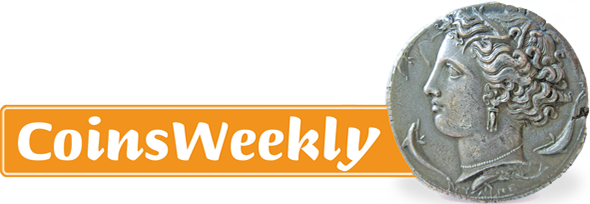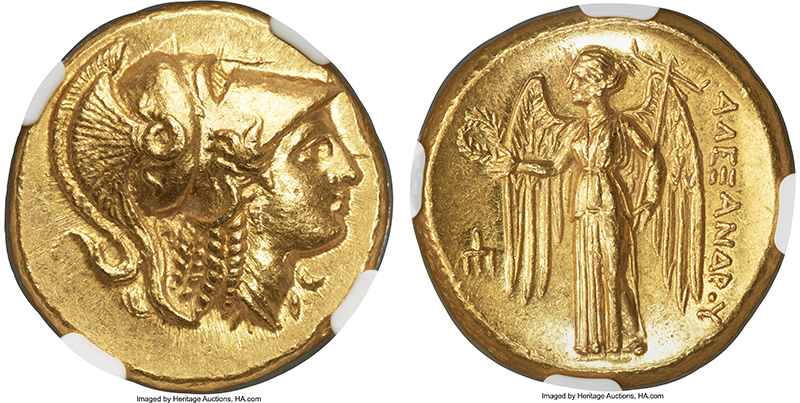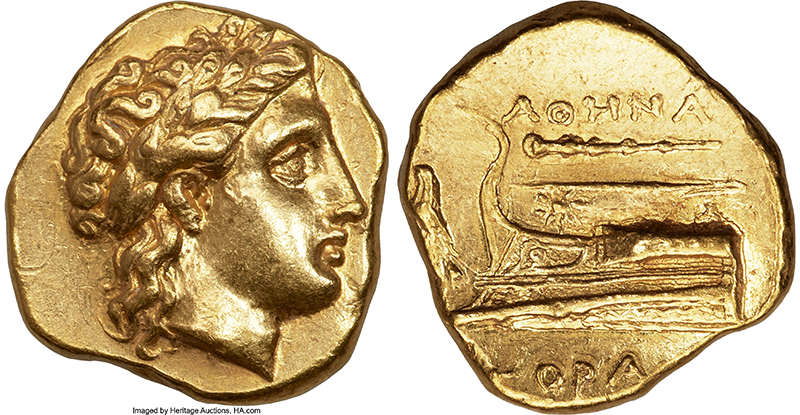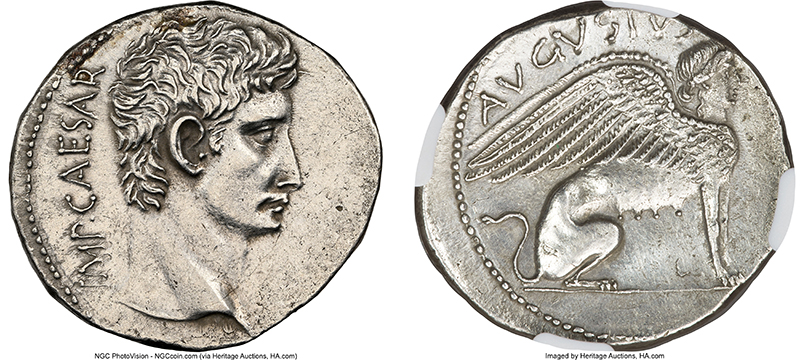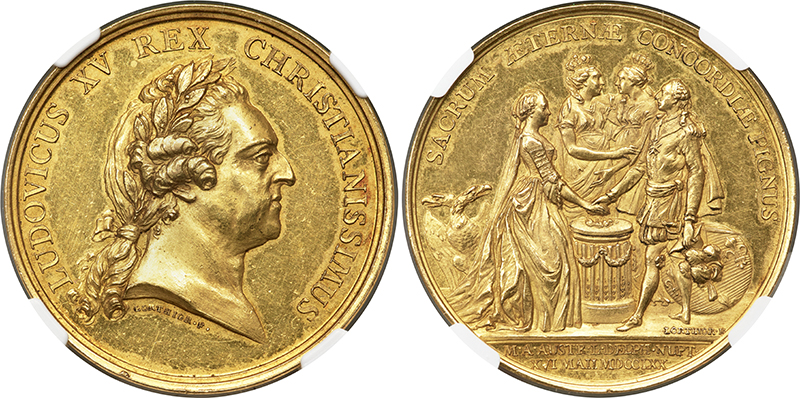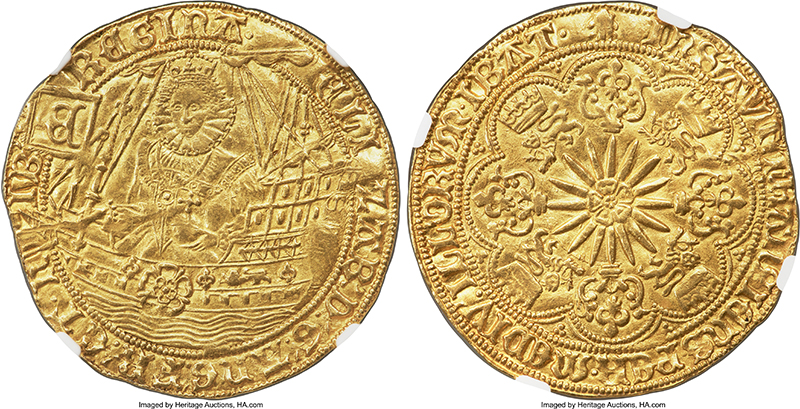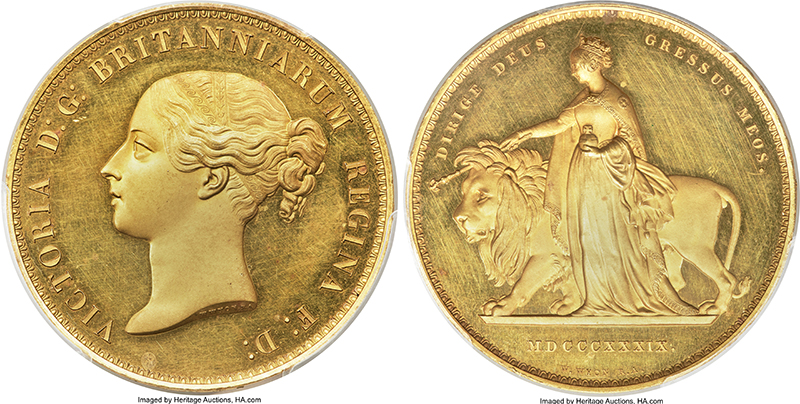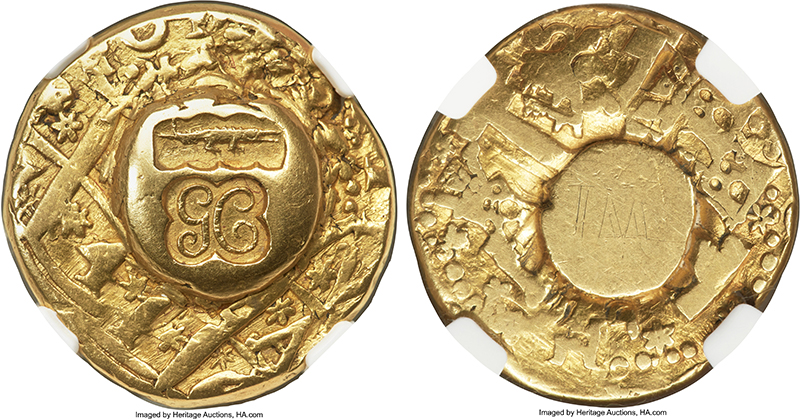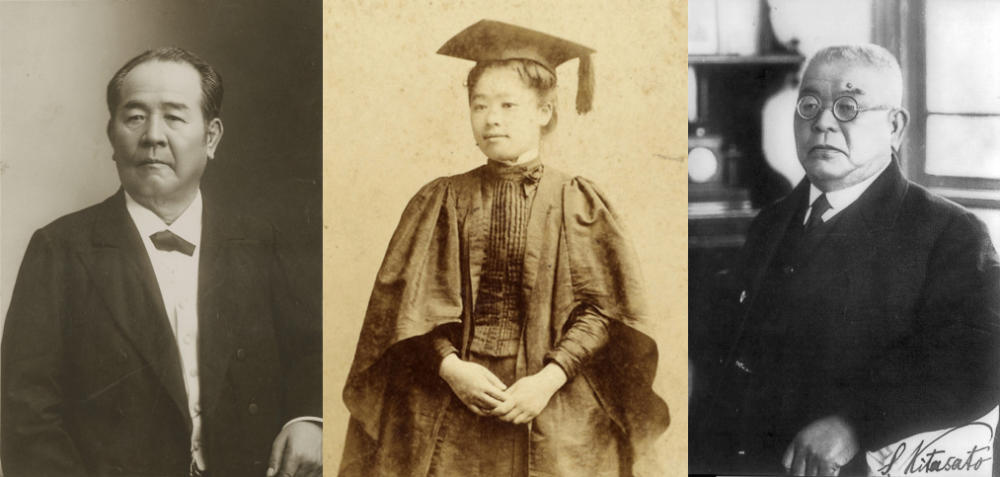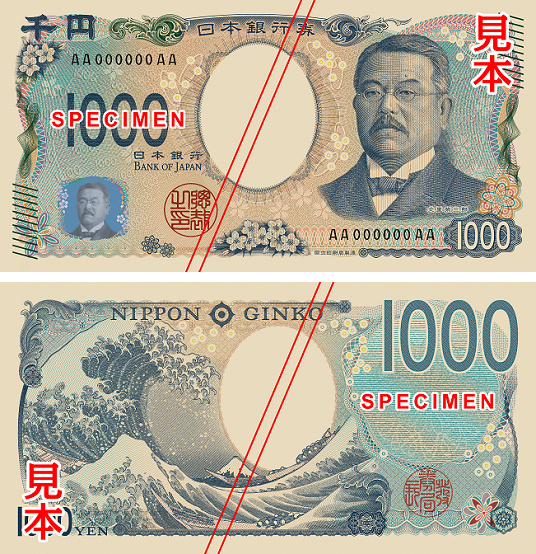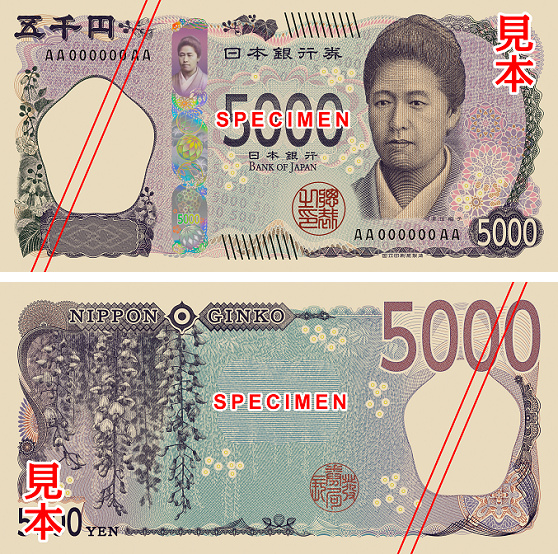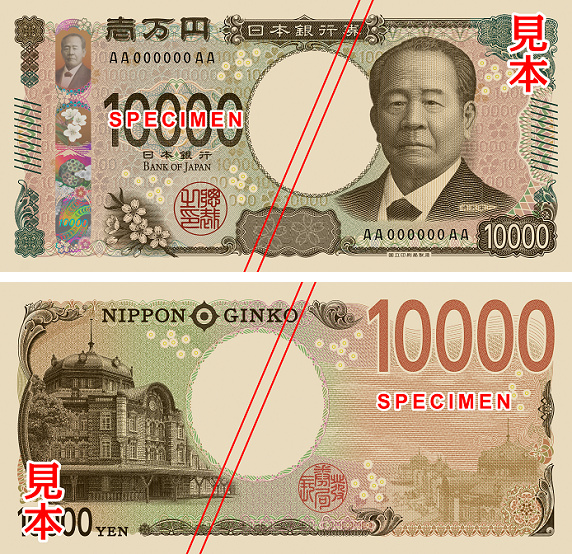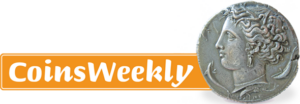These Are Japan’s New Banknotes
As announced in 2019, Japan will have new banknotes of 1,000, 5,000, and 10,000 yen denominations. They are planned to enter circulation in 2024. In April 2023, the Bank of Japan presented the first specimens of the new banknotes and revealed the various new motifs.
The ¥1000 bill will feature physician and bacteriologist Kitasato Shibasaburō (1853–1931). On the the ¥5000 bill, Tsuda Umeko, educator and founder of Tsuda University, will appear. She is the fourth female to appear on a Japanese banknote, after Empress Jingū, Murasaki Shikibu and Higuchi Ichiyō. The ¥10,000 banknote will honour the industrialist Shibusawa Eiichi (1840-1931).
The reverse sides will show Tokyo Station (¥10,000) and wisteria flowers (¥5000). Outside of Japan, probably best known will be the reverse image of the 1,000 yen note featuring arguably one of the most famous Japanese work of art: “The Great Wave off Kanagawa” by Hokusai.
The Bank of Japan has placed special emphasis on the implementation of the latest anti-counterfeiting technologies. These technologies include high-definition watermarks, 3-D portrait holograms, microprinting, luminescent ink, and tactile marks. To make the denominations more easily recognizable for foreigners, the Arabic numbers on the new banknotes will be much bigger compared to the old bills.






